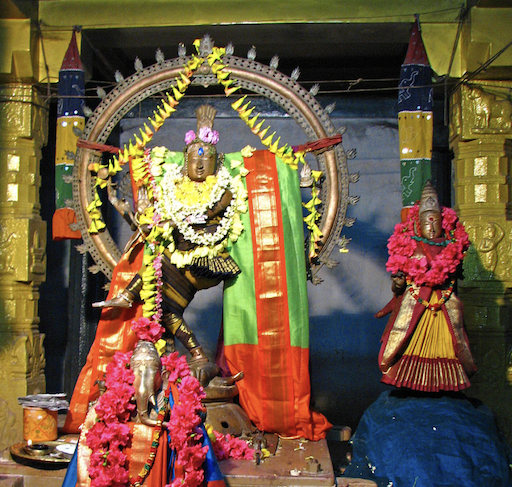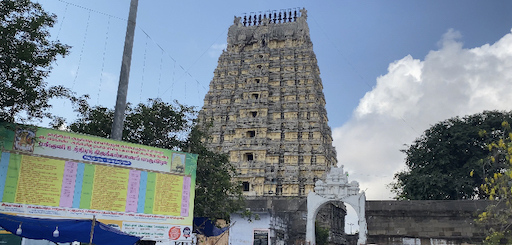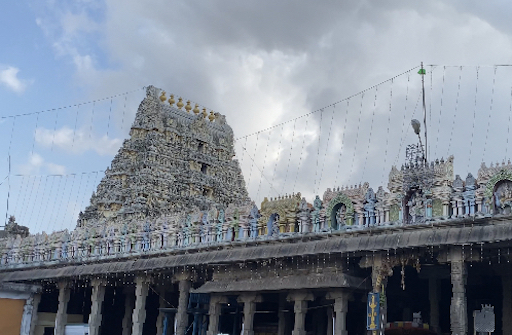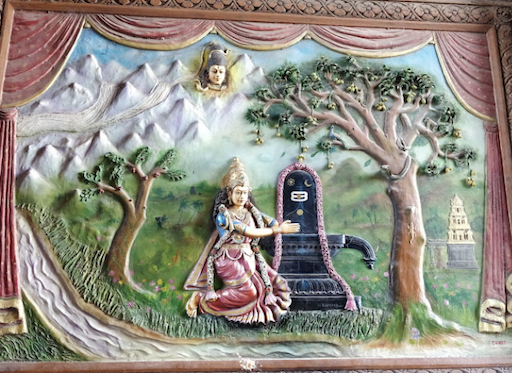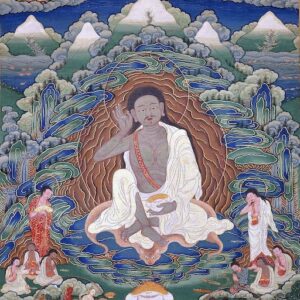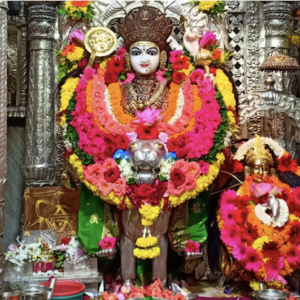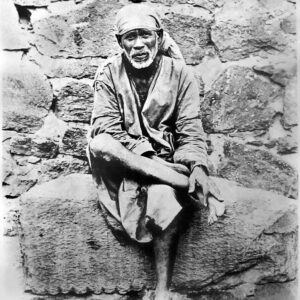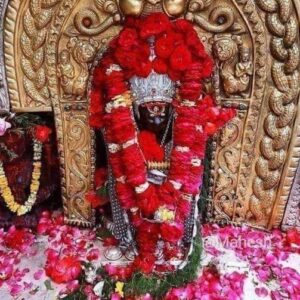This is Nataraja Shrine within Ekambaranathar Temple, Kanchipuram.
There is a place to sit and meditate. You can go into meditative states here effortlessly.
How to get there:
The temple is located 2 kms West of Kanchipuram East train station.
Map: https://goo.gl/maps/VjpK9UNQ3MvRvaiz7
About Nataraja
Nataraja (Sanskrit: नटराज, romanized: Naṭarāja Tamil: நடராஜர், romanized: Naṭarājar) also known as Adalvallan (Tamil: ஆடல்வல்லான், romanized: Ādalvallāṉ)[2] is a depiction of the Hindu god Shiva as the divine cosmic dancer. His dance is called the tandava.[3][4] The pose and artwork are described in many Hindu texts such as the Tevaram and Thiruvasagam in Tamil and the Amshumadagama and Uttarakamika agama in Sanskrit and the Grantha texts. The dance murti featured in all major Hindu temples of Shaivism,[5] and is a well-known sculptural symbol in India and popularly used as a symbol of Indian culture,[6][7] as one of the finest illustrations of Hindu art.[8][9] This form is also referred to as Kuththan (Tamil: கூத்தன், romanized: Kūththaṉ), Sabesan (Tamil: சபேசன், romanized: Sabēsaṉ), and Ambalavanan (Tamil: அம்பலவாணன், romanized: Ambalavāṇaṉ) in various Tamil texts.[10][11][12]
The sculpture is symbolic of Shiva as the lord of dance and dramatic arts,[13] with its style and proportions made according to Hindu texts on arts. Tamil devotional texts such as the Tirumurai (The twelve books of Southern Shaivism) state that Nataraja is the form of Shiva in which he performs his functions of creation, destruction, preservation, and is also attributed with maya and the act of blessing his devotees. Thus, Nataraja is considered one of the highest forms of Shiva in Tamil Nadu, and the sculpture or the bronze idol of Nataraja is worshipped in almost all Shiva temples across Tamil Nadu.[14] It typically shows Shiva dancing in one of the Natya Shastra poses, holding various symbols[14] which vary with historic period and region,[3][15] trampling upon a demon shown as a dwarf (Apasmara or Muyalaka[4]) who symbolizes spiritual ignorance.[14][16]
The classical form of the depiction appears in a pillar of rock cut temple at Seeyamangalam – Avanibhajana Pallaveshwaram Temple constructed by a Pallava King Mahendravarman I in 6th century CE, which is known by Archeological Survey of India and Archeological Survey of Tamil Nadu as the oldest known Nataraja sculpture in India. The stone reliefs at the Ellora Caves and the Badami Caves, by around the 6th century, are also among the oldest Nataraja sculptures in India.[17][18] Ancient Tamil songs during the Bhakti movement written by the four Shaivite saints of Sambandar, Appar, Manikkavacakar, and Sundarar, popularly known as “Nalvar” (The four) extol Nataraja and describes the Nataraja Temple, Chidambaram as the home of Nataraja as the main deity, dating Nataraja worship way before the 7th century CE. Around the 8th to 10th century, statues emerged in Tamil Nadu in its mature and best-known expression in Chola bronzes, of various heights typically less than four feet,[14] some over.[19] Nataraja reliefs have been found in many parts of South East Asia such as Angkor Wat and in Bali, Cambodia, and Central Asia.[13][20][21]
